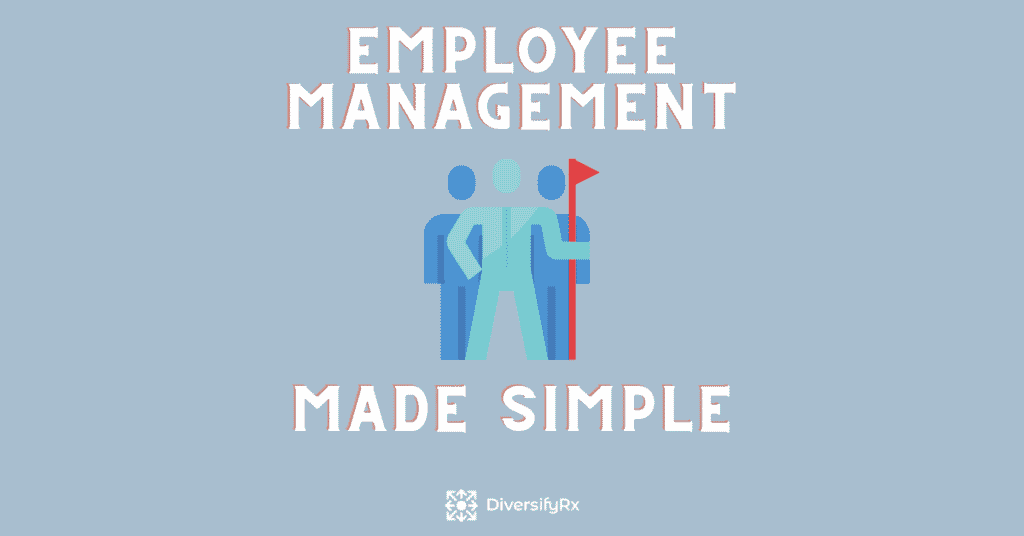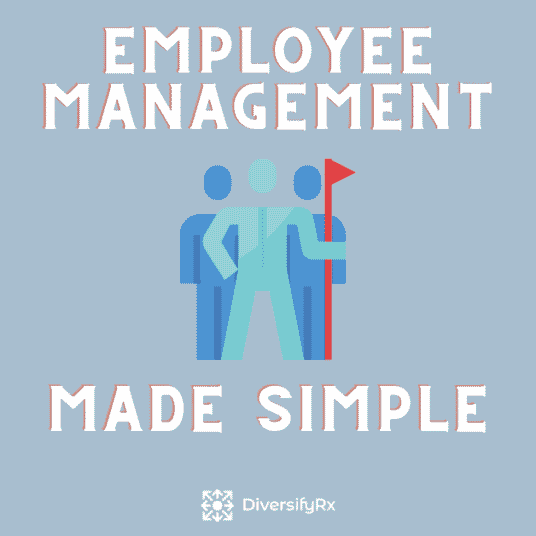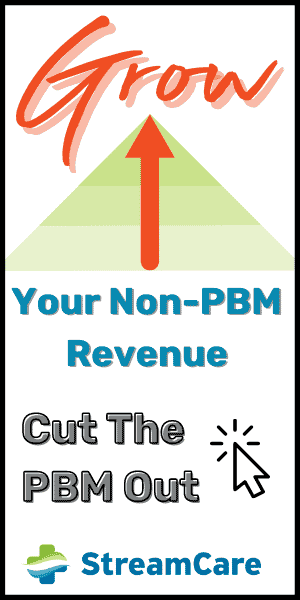If you have been wondering how to effectively manage employees, I have an easy-to-use tool for you.
Employees. You can’t have a successful pharmacy without them, and sometimes it seems you can’t have one with them either! Employee management isn’t a natural ability that most pharmacists have, even though pharmacists are often put in that situation because pharmacists are “over” technicians. Yes, legally, pharmacists need to manage technicians’ activities to comply with laws and ensure patient safety. However, that doesn’t mean that you or your pharmacist is a natural-born manager. Developing employee management skills should be on every pharmacist and pharmacy owner’s to-do list.
Employee Management Without Micromanaging
When any manager is underdeveloped in their employee management skills, their default setting tends to be micromanaging. Micromanaging is not the way to effective employee management. Here are just some of the adverse effects that micromanaging has on employees:
- Increased stress, frustration, and burnout
- Decreased productivity
- Poor health and mental well-being
- Stifles creativity and innovation
- Not scalable
- Damages employee trust
- Increases turnover
Micromanaging has side effects for the manager too:
- Increased stress, frustration, and burnout
- Decreased productivity
- Poor health and mental well-being
- Stifles creativity and innovation
- Not scalable
- Damages self-confidence
Almost identical. No one benefits from a micromanager.
Developing Employee Management Muscles
As with any skill, you can get better with practice and time. If you are frustrated that you never seem to have time to work on your pharmacy, start that new line of revenue, or take a much-needed vacation, it is time to start exercising your employee management muscles. Here are five simple (not necessarily easy) steps to becoming an effective manager.
5 Steps To Vanquishing A Micromanager & Develop Effective Employee Management Skills
- Set clear outcome goals
- Explain priority of tasks
- Increase communication
- Delegate don’t abdicate
- Throwout perfection
Step 1: Set clear outcome goals
You are laying out the “what,” not the “how” for your employees. Describe in detail what the finish line looks like, not the best route to take. By letting your employees choose their preferred method to achieve the goal, you invite creativity and self-reliance. You might be surprised at the awesome ideas your employees have.
A great example of this was when I wanted to increase my OTC sales in my pharmacy. I laid out what our current sales are and where I wanted to be. The entire staff learned about all the various product lines we carried and the magic of upsolutions. I gave exact goals of how much additional sales I was looking for and in the precise timeframe. Once I armed them with knowledge, I let each employee choose their method. Some employees focused on vitamins, others on probiotics, and one employee focused solely on Burt’s Bees products. By allowing them their choice, they each succeeded more than ever before. They had inner confidence and skin in the game to achieve. After all, it was their choice for what to focus on.
Remember, clearly paint a picture of the outcome you are looking for and let each employee create a plan to achieve the results.
Step 2: Explain the priority of tasks
One of the biggest causes of frustration and ineffective employee management comes from misaligned priorities. The employee works enthusiastically on a task he thinks is crucial, and the manager walks by and scolds him for not having a different job completed already. When handing out assignments to employees, make sure you give them when they are due and the order of importance. This clarity will help the employee work more efficiently on what is most important to the manager and help develop their time management skills.
Step 3: Increase Communication
To effectively manage employees, you will need to increase the quality and the frequency of communication. Many managers regress to micromanaging because they hate surprises. If they are involved in every part of a project, then there are no surprises. When a manager and employee learn a new way of working together, more communication is better and will prevent both parties from being caught by surprise. This communication can be simple. Text, emails, or even notes on a desk, will all work in sharing critical information. I recommend that a meeting or phone call is required if there is a problem or significant delay.
Many managers make the mistake of assuming the employees know how often to communicate. If an employee shares more frequently, then the manager might think, “I should just do this myself.” If too infrequent, then unwanted surprises can happen. Instead, the manager should tell the employee how often updates should come and his preferred method of getting them.
Step 4: Delegate Don’t Abdicate
This lesson was the hardest for me. When I first started giving employees more freedom and a chance to take charge, I assumed (incorrectly) that they would take my instructions and execute them flawlessly. I know, it sounds dumb. We often expect of others what we expect of ourselves. Employees won’t pick up new tasks as you do; they might need instructions differently. For everything you delegate, you must also follow up with.
Checking in with employees and following up is not micromanaging. You are not stepping in and doing the work or instantly solving their problems. Letting employees know beforehand that you will be following up will also prevent any trust issues. When it comes time for you to check in on your employee, here is a list of items to consider.
- Spot check their completed work for accuracy.
- Ask if there are any unexpected issues.
- Ask how you can better support them.
- If problems come up, get their insight on a solution first.
Step 5: Throwout Perfection
Logically, no one expects perfection. Oftentimes though, we can behave as we do. Be sure to treat minor errors or mistakes appropriately. Learn from them, but don’t dwell on them. Never, ever, never, ever expect anybody else to do a job as good as you. The best lesson I learned long ago is to expect only a maximum of 80% as good as yourself as the top achievable amount. If you can fill 300 scripts a day with one tech, a fill-in pharmacist can probably only do 240. By using this 80% rule, you will have more realistic expectations of others, and you won’t be disappointed, and they won’t feel like a failure.
A Simple Tool That Does All 5 Steps
I promised you a simple tool to help with employee management. I call it a controlling calendar. Every employee has a controlling calendar that allows them to keep track of their daily, weekly, and monthly tasks. High-priority items are at the top (and usually have a bonus tied to them). Due dates are built-in. You can either label them for frequency (daily, weekly) or mark them on the calendar when a specific task is due. A controlling calendar also serves as a communication tool. Rather than needing the employee to reach out actively or me having to go around the pharmacy asking, “did you do this?” a glance at their calendar will tell me the status of their projects.
You can download my excel file template that has several versions of a controlling calendar in it. Most of the tabs are job position-based. You can also do a unique project to track the various steps to completion, as shown in the inventory control tab. This calendar is highly customizable. Many of the steps in here wouldn’t make sense to you unless you were an employee at my pharmacy. Download yourself a copy and customize it to your pharmacy.
Get Your Copy of the Controlling Calendar Excel File
If you need any help with employee management, leave a comment or contact me via email at info@diversifyrx.com.



















